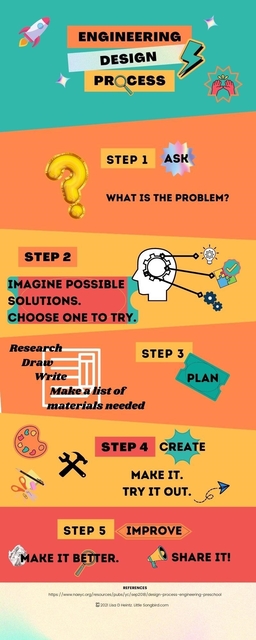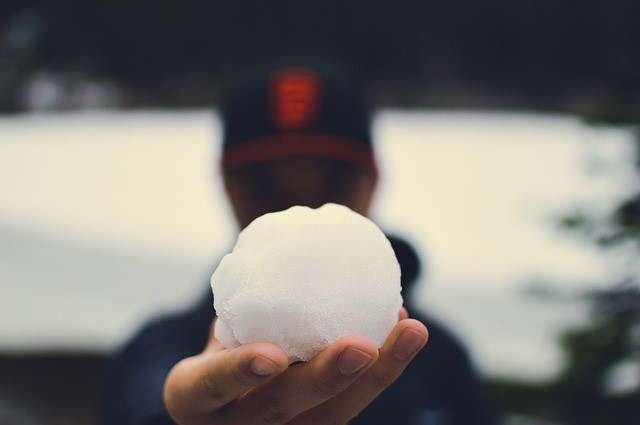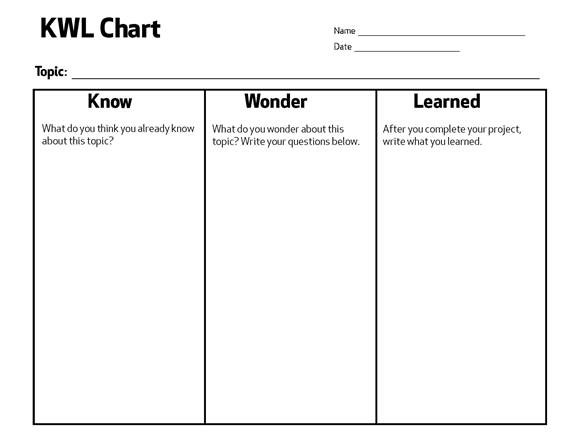Chill Out with Winter Science Activities
Winter is a wonderful time to try out some science activities with children. There are options for all parts of the country here, so even if you're in an area that doesn't get snow, you'll find something fun and educational.
Early Childhood Science Experiments
Science experiments, which can be hands-on, generally provide opportunities for children to observe well-known, documented principles of the physical world through experiments where we might have some understanding of the “how and why.” While children may have a variable to test, the results are fairly predictable.
Early Childhood STEM Experiences

STEM activities are intended to incorporate different content areas across your existing curricula with a focus on Science, Technology, Engineering or Math (a combination of two or more areas).
STEM and STEAM are more than just science experiments. Students may begin with a scientific principle, but they will use engineering skills to design and experiment with different possibilities, use mathematics and technology to measure the effects, use communication skills to explain the results, and incorporate analysis skills to refine the product and try again.
Through STEM and STEAM children develop both “hard” (content area information) skills as well as “soft” skills including teamwork, inquiry, creativity, problem-solving, critical thinking, and communication skills -- all necessary for success throughout life.
The best STEM or STEAM activities for young children comprise several facets that may differ from a typical science experiment or activity because they:
🔎 attempt to solve a real-world problem
🔎 are focused on the Engineering Design Process (EDP)
(see infographic) to develop potential models for investigation
🔎 include open-ended, hands-on inquiry
🔎 involve children in small group work
🔎 integrate math, science, engineering and/or technology (STEM), and can include aspects of the arts (STEAM)
🔎 allow for multiple “right” answers
🔎 emphasize “failure” as necessary for learning
Early Childhood STEAM Activities
STEAM integrates the Arts into a STEM plan. The Arts can include physical, fine, visual, music, language, sociology, politics, humanities, history, and more. STEAM helps children realize the power of using both sides of their brain - the creative and the analytical - in order to solve almost any problem. STEM & STEAM foster flexible thinking as our world grows and changes.
Winter Science Experiment: Homemade Snow
Materials: Large clear bowl, baking soda, shaving cream for sensitive skin, white vinegar, covered working surface, 1 cup measure, real snow for comparison (if available).
Steps:
- Measure 1 cup of baking soda* and pour into a bowl.
- Add 2 cups of shaving cream*.
- Mix with hands to blend well. (Wear disposable gloves if you have sensitive skin or abrasions).
- Distribute “snow” equally to children and encourage them to create snowballs, critters, letters, etc.
- For added interest, roll the snow into a large ball and push an indentation into the center at the top. Carefully pour about ¼ cup vinegar into the hole and watch what happens! (It will overflow, similar to a volcanic eruption, due to the chemical reaction between the vinegar and the baking soda). You may continue to add vinegar to make it “erupt” repeatedly.
Questions to prompt conversations:
- How does the “snow” feel? Does it feel different than real snow? How? Why do you think that?
- What makes real snow? What made the fake snow? Are there any similarities?
- What made the snow bubble up? (Baking soda is non-combustible but reacts to acids (like vinegar) by letting off carbon dioxide gas and heat).
- What are some things you like to do when it snows?
- What other things could we try adding to our fake snow? What might happen? (If possible, explore some of their suggestions another time).
*While generally quite safe for hands (unless there is a cut/skin abrasion), do not ingest baking soda (aka sodium bicarbonate) or shaving cream. Shaving cream contains 80% water, but the remaining 20% is made up of soaps, oils, fragrances, preservatives, and moisturizing ingredients that can be irritating to skin, eyes or stomach. Both mediums can cause mild stomach, skin or eye irritation. See Douek article below for natural alternatives.
Winter STEM Experience: Snow-made Snowballs

Snowballs by Lois Ehlert presents a simple text about the impending first snow of winter. When the family in the story determines that it is a “perfect snowball day” they use unusual found objects to create their first snow family.
STEM Challenge question: What makes snow “perfect” for snowballs?
Materials:
- Surface cover (cut plastic tablecloth to fit desks or smaller tables or use newspaper, towels)
- Plastic dish tub (1 per small group)
- Insta-Snow Powder (provide each group with their own amount in a container)
- 8 oz measuring cup or fractional measuring cups for snow powder
- Plastic 2-cup measure of water
- Paper and pencil for recording results
- Real snow for comparison, if available
Instructions:
Challenge children to experiment and record their findings to determine the best ratio of water to powder to create fluffy snow and thicker snow. What type of snow makes “perfect” snowballs? Why? Students should record their responses.
Winter STEAM investigation: Lessons from a Snowflake

Snowflake Bentley by Jacqueline Briggs Martin is a perfect introduction to children’s basic inquiries about snowflakes and offers a great springboard for this STEAM activity.
Provide this book along with an assortment of other books about snow (see Resources) for a week or more prior to this exploration to give children an opportunity to review the books and develop their own questions.
As a group, discuss what they already know about snowflakes. List these under the K of a simple K-W-L chart like this:

Follow the K column by adding their questions to the W column to discover what they wonder/want to know more about regarding snow or snowflakes.
Share the book Snowflake Bentley with the group. After reading, add to the L column anything new they have learned from the book.
Show one of the short videos about snowflakes or Mr. Bentley (see Resources). Add to the L column again as needed. Is there anything new they wonder/want to know?
STEAM Challenge: Use your knowledge of the form of snowflakes (6-sided/hexagonal; each one different) to create your own unique snowflakes using only the materials provided.
Materials:
- Paper for sketching ideas
- Pencils
- Surface protection (newspaper, tablecloth, or cut plastic tablecloth)
- Desired construction materials (select one set, or provide small groups with different sets), i.e.:
- Cotton swabs, scissors, glue, waxed paper (peels off when glue is dry)
- Toothpicks and white marshmallows (assorted sizes; vegan also available)
- Paper or waxed paper, scissors (choose whether to model how to fold/cut in advance- see videos under Resources)
- Pastel, white &/or sparkly pony beads, craft stems
- Cardboard or construction paper tubes (Chipboard box (i.e., cookies, cereal) or paper trimmed, rolled and stapled into a tube; or cardboard tubes (toilet paper, paper towel or gift wrap tube cut into sections), scissors, supplies for decorating
- Cotton swabs, scissors, glue, waxed paper (peels off when glue is dry)
- Desired decorating materials (e.g. paint with brushes, markers, glitter, glue, sequins, dot daubers, etc)
Instructions:
- Determine whether you want to provide each small group with the same set of materials, or each group with different materials. Collect enough of each supply to accommodate your choice. (Decorating supplies may be kept in one location as not all types of snowflakes will need decorating).
- Review available resources about snowflakes and Mr. Bentley and the KWL chart. Encourage children to refer to the books and chart if they wish to do research for their challenge.
- Provide each group with the appropriate supplies.
- Remind them that the challenge is to create unique, 6-sided/-pointed snowflakes using only the materials they’ve been given.
- Find ways to display the snowflakes around your room and in the halls--on the windows, hanging from the ceiling, roll balls of playdough to create a stand for those not made of paper.
- Have each student write/draw/dictate a caption for how their snowflake was created, or what they learned about snowflakes to display with their project.
References:
- Bramley, Anne. 2016. So You Want To Eat Snow. Is It Safe? We Asked Scientists : The Salt : NPR
- Doorley, Rachelle. 2011. Tinkerlab: Make Cardboard Tube Snowflakes - TinkerLab
- Douek, David, ed. 2021. Is Shaving Cream Toxic? - beeco
- Jolly, Anne, Education Week. 2021. Six Characteristics of a Great STEM Lesson
- Reimer, Jamie. Hands on As We Grow blog. 30+ Easy Snowflake Crafts Kids Will Love to Make - HOAWG
- Sharp School. STEM in Science Classrooms (Elem)
- University of Central Florida, Engineering. Comparing STEM vs. STEAM: Why the Arts Make a Difference | UCF Online
- Yakman, Georgette. 2019. STEAM- An Educational Framework to Relate Things To Each Other And Reality
- Young STEM Explorers. 2021. STEM: More than just Science Experiments for Kids
Books:
- Branley, Franklin M. Let’s Read & Find Out: Snow is Falling (2000). Grades PreK-2.
- Cassino, Mark & Jon Nelson. The Story of Snow. (2009). Grades 2-4.
- Ehlert, Lois. 1995. Snowballs. Ages 2-6.
- Gibbons, Gail. It’s Snowing! (2012). Grades PreK-2.
- Hartmann, Jack. Science Songs for Learning & Movement Fun. Weather and states of matter songs.
- Martin, Jacqueline Briggs. Snowflake Bentley. (2009). Grades PreK-2.
Videos:
- Video: Snow is Falling (Branley) by STEMHax. Includes explanation of the purposes of snow, and some simple experiments to try.
- Video: “Where Do Snowflakes Come From?” by SciShow Kids. Information moves quickly but it has strong graphics
- Video: “Snowflakes Photographed by New High Speed Camera” by the National Science Foundation.
- Video: Brief Time lapse photography of various snowflakes forming, by Caleb Foster.
- Video: “The Snowflake Man” by Chuck Smith. An 8:32 film including recollections by Wilson “Snowflake” Bentley’s friend, scientists, and a historian who shows Bentley’s actual camera and original photos.
- Video: Slide show of various snowflakes by Clinton R. Maust, Jr.
- Video: A reading of Lois Ehlert’s book Snowballs produced by Michael Clark & teacher Kelley Clark. Includes captions and closeups from the book.
- Video: How to make a paper snowflake by Preschool Art Ideas. (Not 6-pointed/hexagon)
- Video: How to make a 6-sided snowflake by Mr. Otter’s Art Studio
Experiencing snow, whether real or homemade, provides new ways to engage young learners’ minds and bodies as they explore the special properties of snow and what imaginative things they can do with it. There is a great deal to be learned about the physical properties of snow, temperature,, and states of matter along the way, too. These activities could be turned into a holiday take-home for exploration over winter break or weekends, too. There are countless ways to “chill out” with children in winter that are educational and fun!
Lisa Heintz, M.Ed., is an educator with over 25 years of experience supporting learners from toddlers to adults, and owner of Little Songbird: Songs for Learning, a site that provides quality children’s music and book recommendations for PreK-grade 3 educators. She stays “green and growing” by volunteering in community and school projects that focus on Diversity, Equity and Inclusion, as well as with the Children’s Music Network. She is fascinated by birds of all sorts, loves cats, and is the proud mom of a son who is a shining example of what intentional teaching and parenting can do for children with disabilities. Connect with Lisa at Lisa@LittleSongbird.com.
The opinions, representations, and statements made within this guest article are those of the author and not of Becker’s School Supplies as a whole. Any copyright remains with the author and any liability with regard to infringement of intellectual property rights remain with them. The company accepts no liability for any errors, omissions or representations.
